Being a portable battery-powered Bluetooth speaker, an amp, and a guitar effects modeling system, the iLoud and its dedicated iOS apps cram a lot of potential into a small package.
IK Multimedia's iLoud is a 40-watt stereo speaker, which means it puts out a combined 40 watts of sound split between four drivers. That's plenty loud. By way of comparison, Eric Clapton's favorite tube amp only puts out 5W, and he mics it up to play big shows.
The iLoud isn't just a speaker, however, as users can connect and a variety of instruments for amplification by using one of IK's AmpliTube iOS apps.
Design
The most prominent physical feature on the iLoud is its perimeter-illuminated volume knob, which glows red when the unit is turned on. The hard plastic chassis is sturdy and includes a kickstand that swivels out from speaker's base for added stability.
Located on the back are input/output ports, power control, charging port, status light, Bluetooth pairing button and gain control.
Behind the front grill sits four powered drivers, two 3-inch mids and a pair of 3/4-inch tweeters. Power is divvied up with 16 watts going to each midrange driver, while each tweeter is supplied with 4 watts of juice.
According to IK, the built-in battery is good for 10 hours of use at normal volumes and we found this spec to be accurate. Louder volumes of course drain the battery substantially faster, and the iLoud was built to rock. An included AC adapter charges the unit, while the tri-color LED status light notifies users when it's time to recharge.
The DSP-toting speaker has only two on-board sound controls: the central volume knob and the gain control around back. All other tweaks are handled through an attached iOS device.
In use
As far as using the iLoud as a vanilla loudspeaker, our tests showed sound fidelity does not suffer much when listening to music streamed over Bluetooth — unlike many other Bluetooth-enabled audio products. Alternatively, users can patch in a media player through the 3.5-millimeter audio-in port for higher quality sound. Overall, audio reproduction was very good, with minimal distortion even at high volume.
What makes the iLoud special, however, are its capabilities as an amp. Being part of the iRig line of products, the speaker sports a 1/4-inch jack and gain control. With a built-in iRig circuit, connect an iOS device using the included 3.5mm TRRS cable, fire up any one of IK Multimedia's AmpliTube products, plug an axe into the 1/4-inch jack, and you now have a very portable and capable guitar amp with multiple effects at the ready.
In our tests, we packed up the iLoud in a backpack and took it to the local guitar shop. We were able to try the setup with a number of guitars, from Les Pauls to Paul Reed Smiths, from Strats and Teles to unusual Taylor electric guitars. The iLoud and its dedicated app held up well and really showed off the flexibility of the system.
Along with guitars, any instrument with a suitable output signal can be attached. It should be noted, however, that an XLR adapter is required for professional microphones.
When properly calibrated, sound output is great, but it takes a little effort to get there. Users have to balance the volumes of selected effects, the amp that's being modeled, and volume all from the iPhone or iPad app. Without an initial setup, it's easy to under-power the signal, which results in hiss.
Another detail about the app is that it's important to consider how you want to use it. iPhone and iPad versions are sold separately for $19.99 each. Add to that the licensed and branded versions of the app (AmpliTube Fender!) and in-app purchases for more effects, and it can be easy to make a double purchase if you aren't careful. For this review, we used AmpliTube for iPhone.
While the app-based system is flexible, there are limitations with the iLoud setup. With the embedded iRig circuit, any signal coming through the 1/4-inch jack is directed to the iOS device (itself connected via the 3.5mm jack) for processing, not the iLoud's speaker circuitry. This means users must have an attached iOS device to operate the unit in amp mode, connecting a guitar alone does not work.
In addition, depending on the guitar we used, the gain needed to be adjusted for optimal results. While the iLoud sounded perfectly fine with gain kept at the "middle" point set by the factory, tuning it helped the speaker really come into its own. Without tweaking, we found ourselves reaching for the volume knob when the speaker was already at max levels.
Conclusion
Overall, the iLoud is a good Bluetooth speaker and an excellent portable guitar amp. The app-based effects and amps sound good and are much more convenient than lugging around a pedalboard, power supplies, and patchboards.
With a bevy of options to tweak vocal and instrument input, as well as Bluetooth and hardwire connectivity for media playback, the iLoud system represents one of the most versatile portable platforms on which to reproduce music, both pre-recorded and live. Plus, it's loud.
Score: 4.5 out of 5
Pros:
- 40 watts of power means plenty of sound
- Bluetooth connectivity makes this more than an amp
- Amp and effects modeling offer versatility when playing guitar
Cons:
- Multiple volume settings take some tweaking to avoid hiss
- iPhone and app needed for amp duty
Where to buy
IK Multimedia's iLoud is available now for $260 from B&H Photo (tax-free outside of NY) and Amazon.com (tax-free outside AZ, CA, KS, KY, MA, NC, NJ, NY, ND, PA, TX, and WA).
 Victor Marks
Victor Marks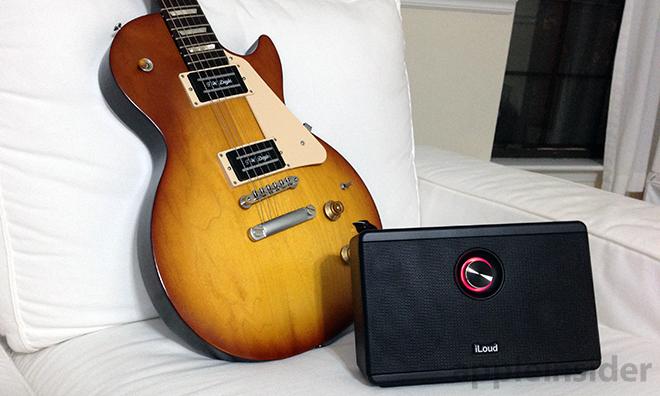

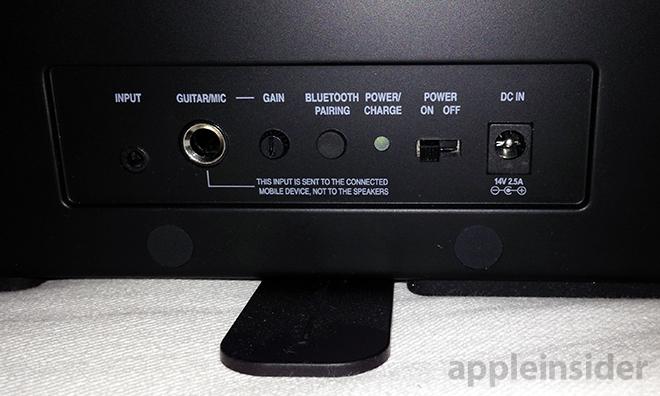
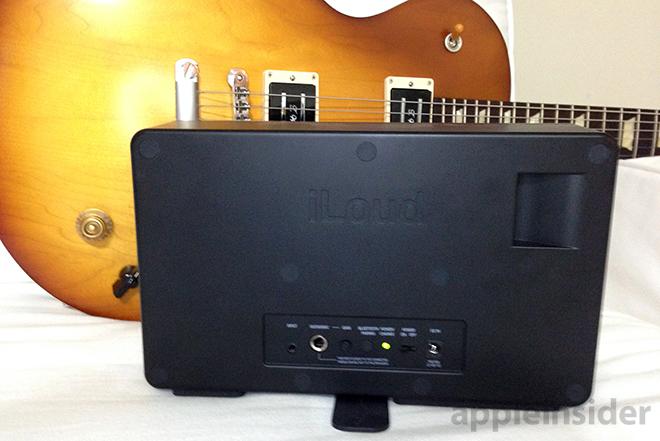
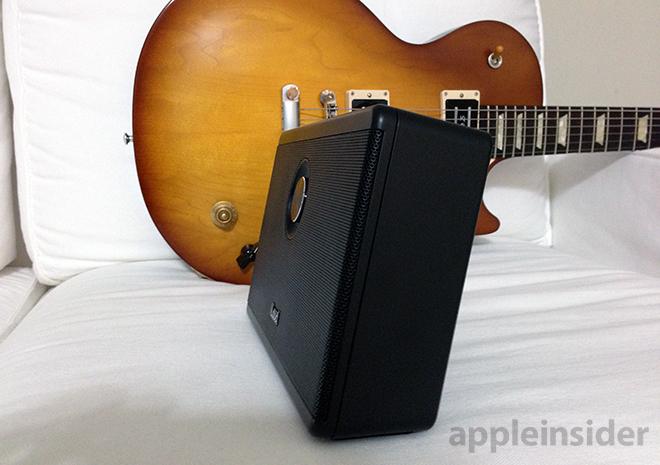





-m.jpg)


-m.jpg)






 Malcolm Owen
Malcolm Owen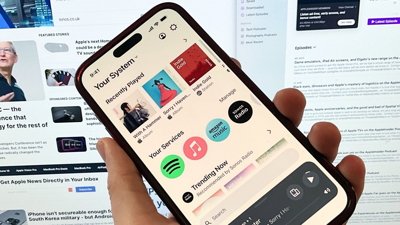
 William Gallagher
William Gallagher
 Amber Neely
Amber Neely

 Andrew Orr
Andrew Orr

 Christine McKee
Christine McKee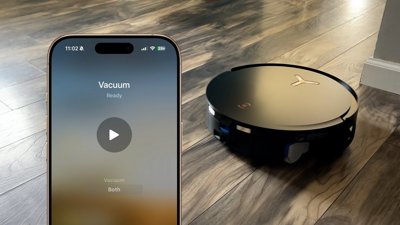
 Andrew O'Hara
Andrew O'Hara






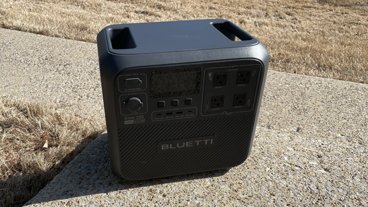

18 Comments
So, Airplay is dead then?
[quote name="designguybrown" url="/t/176617/review-ik-multimedias-iloud-portable-speaker-delivers-on-sound-flexibility#post_2507038"]So, Airplay is dead then? [/quote] Don't know how you got that idea...
1) It looks like Scott Forestal designed the Amplitude for iPhone app. 2) No word on weight in the article but Amazon states the shipping weight is 4.6lb/2.1kg which iI find surprisingly light given it's apparent durability, containing speakers, and 10 hour battery life. 3) Looks like a great product overall and, to me, the $260 doesn't seem excessive.
A guitar with an iPhone dock. Recessed so the phone can sit secure. Then you can have the screen as an interface for controlling the effects of the guitar. Connecting to the box displayed here.
Nice review. Can you kick it over after playing a long set of metal songs for a crowd?